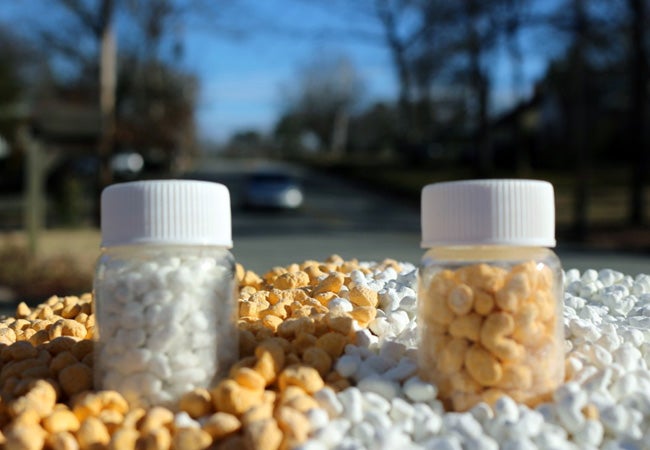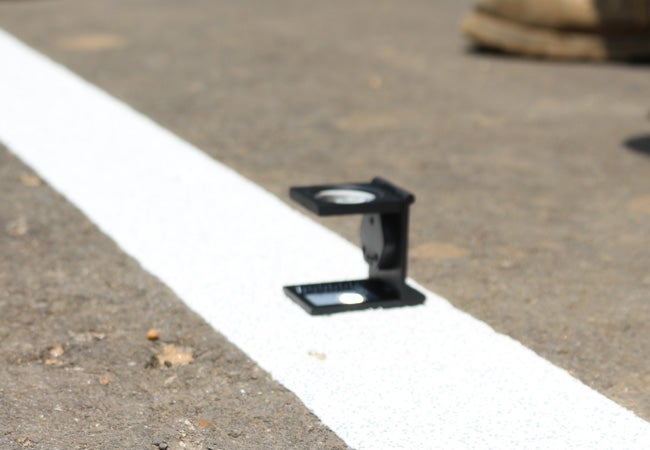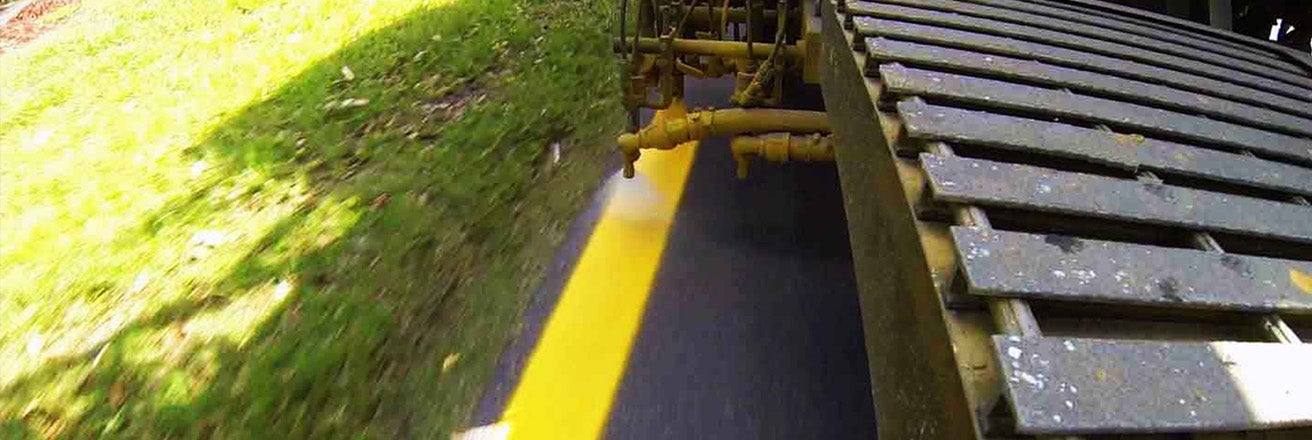
Our field testing indicates that pelletized thermoplastic outperforms granular in the highly desired trinity of productivity, quality and safety: Striping run lengths can increase more than 50% (productivity), operators work in a cleaner environment (quality), and contractors and the driving public benefit from reduced lane interruptions (increased safety): This is a major advance for the road-marking industry.
This advanced road-marking product allows contractors to expand capacity without investing in new equipment or increasing their workforce. It can provide a competitive edge in an industry experiencingproject backlogs and labor shortages at a time when funding for road projects is on the rise.
Productivity: faster melt times, consistent temperatures
Pelletized thermoplastic is the same formulation as granular, but homogenous, pre-melted, fully encapsulated and free flowing. Because its ingredients are evenly dispersed, the pelletized form can have a higher passing rate for pretesting compared to the non-homogenous granular form. Improved pre-testing efficiency reduces both the potential for project delays and the workload of overstretched government labs.
The attributes of pelletized thermoplastic enable higher mixing speeds, allowing the material to melt faster than its auger-slowing granular counterpart. Loading and pre-melt time can take approximately 20 minutes less, getting equipment back on the road quicker for increased application time.
Pelletized thermoplastic’s improved thermodynamics also allow the manifold temperature to be consistently maintained, keeping the material above the minimum application temperature longer. By eliminating the need to reheat the kettle mid-run, a contractor can stripe more linear feet per day.
In field testing, ENNIS-FLINT® by PPG THERMODROP® pelletized thermoplastic maintained manifold temperatures that were higher than granular by 15 to 20 degrees Fahrenheit. This enabled the contractor to extend runs from 35 minutes to one hour — a 71% increase.
The increased productivity gained from using pelletized thermoplastic translates into reduced lane rental fees and mobilization costs. These cost savings combined with those captured from extended runs can make pelletized thermoplastic competitive with granular when comparing total project costs.

Quality: reduced dust, increased reflectance
One of the significant advantages of high-quality pelletized thermoplastic is that it drastically reduces dust when unloading bags of the material into the hot kettle. Unlike the granular form, pelletized thermoplastic is fully encapsulated, which means operators are spared the discomfort of powder caking their skin. This cleaner environment may serve as a selling point to help attract and retain employees who might otherwise look for jobs with better working conditions — a real advantage in a tight labor market.
Additional material-handling benefits of pelletized thermoplastic include reduced splashing and no moisture burn-off since the pellets are not prone to holding moisture like granular is. Splashing and burn off can lead to operators experiencing burns while dumping bags. The lack of moisture also helps extend the shelf life of pelletized thermoplastic to 18 months versus 12 months for granular.
High-quality pelletized thermoplastic positively impacts visibility on the road as well. Because the dispersion of its pigment is more homogenous than granular, daytime color reflectance is improved.
Our lab testing of white ThermoDrop pelletized thermoplastic showed an 11% increase in daytime reflectance compared to granular.
Because pelletized thermoplastic is homogenous and melts faster, it can maintain a more consistent viscosity than granular. As a result, operators may not have to calibrate equipment as often to get the right mil thickness on the road, which reduces waste. Several contractors that use ThermoDrop pelletized thermoplastic indicate they are realizing higher yields because they can consistently achieve the required thickness, mitigating the need to apply a thicker stripe due to viscosity uncertainty.

Safety: fewer mobilizations, reduced lane interruptions
The use of pelletized thermoplastic can reduce disruptions to both the operator and the driving public.
Operators have reduced exposure to traffic because fewer mobilizations are needed due to the longer runs that pelletized thermoplastic provides. Minimizing the time operators are in work zones is a priority for every contractor and government agency.
Increased contractor productivity means jobs are complete faster, reducing lane interruptions for the driving public. Not only does this enhance driver safety, but it also reduces frustration. An added bonus is that pelletized thermoplastic produces higher reflectance, further increasing safety.
The use of pelletized thermoplastic road markings represents a significant leap forward for an industry grappling with project backlogs and labor shortages while also seeking to capitalize on increased infrastructure funding.
This innovative and durable solution not only extends runs up to 50%, but it also enhances operator comfort, improves striping quality, and reduces mobilizations and lane interruptions.
These compelling benefits underscore how pelletized thermoplastic is redefining industry standards. It’s not only a step change but also a stride toward a safer and more efficient future in road markings.
